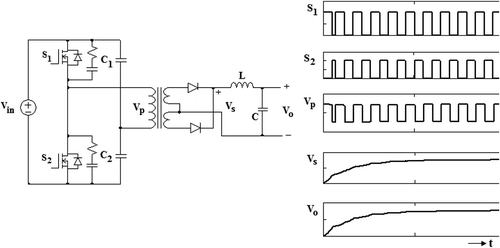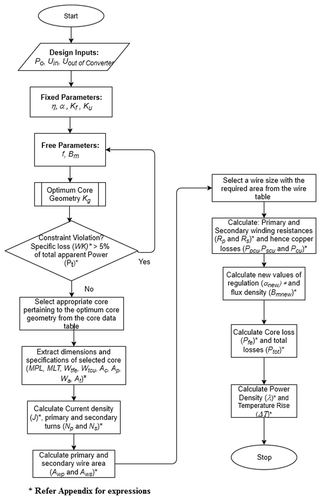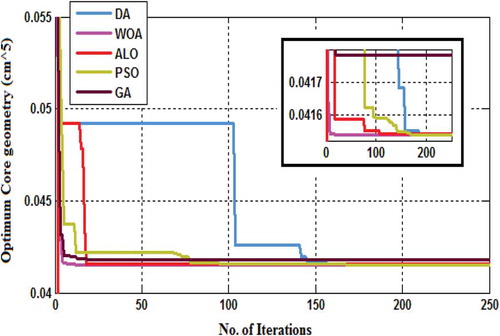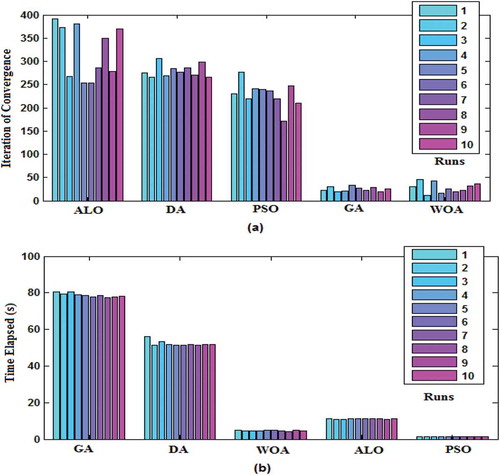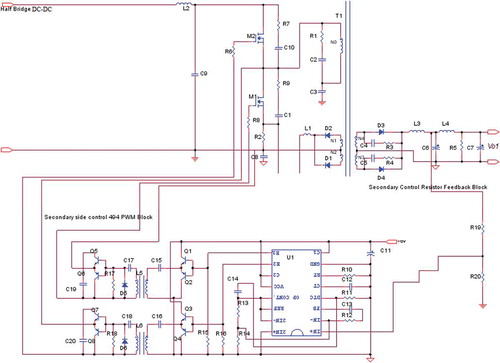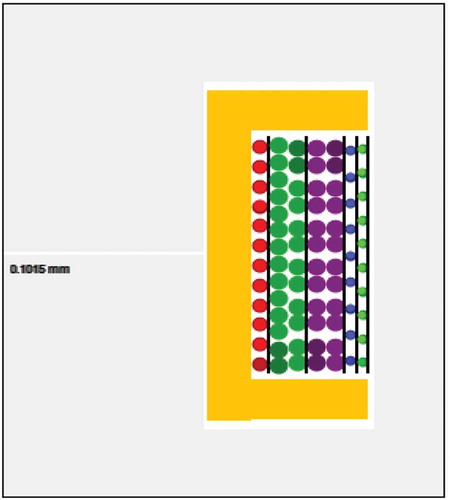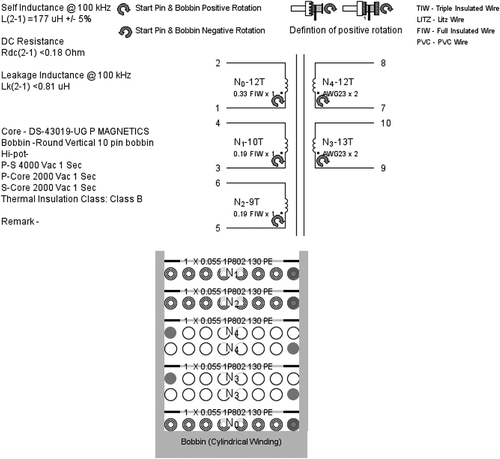Figures & data
Table 1. Design specifications of a single converter module.
Table 2. Fixed parameters for optimization.
Table 3. Comparison of performance of optimization algorithms.
Table 4. Optimal core data.
Table 5. Optimal transformer characteristics.
Figure 8. (a) Output switching ripple voltage waveform. (b) Input voltage (CH1) and input current (CH2) waveforms. (c) %Efficiency vs. input voltage. (d) Total dissipated losses vs. input voltage. (e) Output voltage regulation. (f) Variation of peak flux density of the transformer with respect to input voltage.
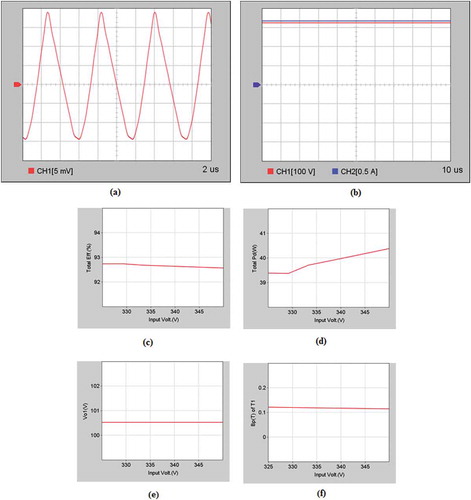
Table 6. Specifications of power circuit components.
Table 7. MTBF analysis of the overall circuit.
Table 8. MTBF analysis of the HF Transformer.


